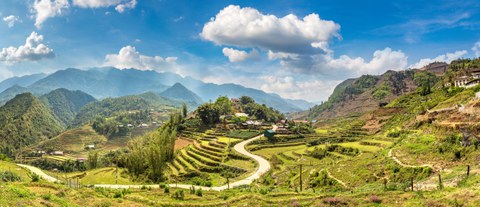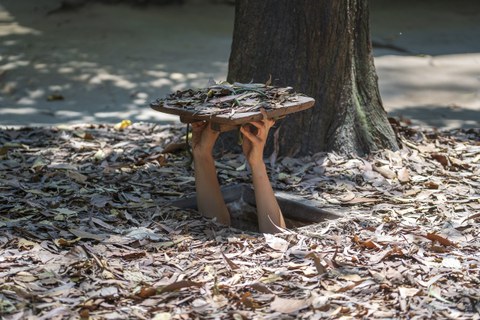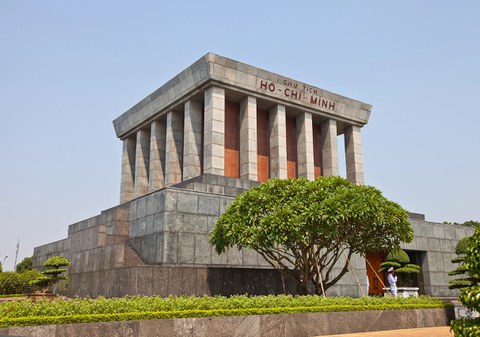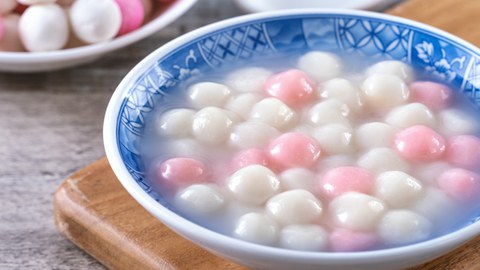Partner Country of the Month April 2021: Vietnam
Marked by colonialism and traumatising experiences from the war against the USA, for a long time Vietnam had a hard time finding its own way. By now, however, the country has developed into one of the most exciting travel destinations in Southeast Asia. With breathtaking landscapes, misty mountains in the north and untouched tropical islands in the south, and the most delicious street food in the world (which you will continue to dream about long after your Vietnam trip), there is much more to discover along the "bamboo pole with two rice bowls"!
With the "Partner Country of the Month" campaign, we want to shine a spotlight on the wide diversity of countries, regions and partner universities of TU Dresden that our students can explore during a semester abroad.
Table of contents
General facts and figures about Vietnam
Capital: Hanoi
Population: 86,9 million
Official language: Vietnamese
National holiday: September 2 (Declaration of Independence 1945)
Currency: Đồng (VND)
You can find further facts, figures and information on Wikipedia, or e.g. at Visit Vietnam.
Language matters
- Hello - Chào
- How are you? - Khỏe không?
- My name is ... - Tôi tên là ..
- What costs ...? - Cảm ơn
- Thank you - tạm biệt
Due to centuries of colonialism, the Vietnamese language is strongly influenced by China. Only later on did Vietnam develop its own script (chu nom), which is also based on the Latin alphabet. Vietnamese belongs to the so-called tonal languages, meaning that while the grammar is relatively simple, learning the correct pronunciation is not. Even a small variation in pronunciation can change the entire meaning of a word, as the following example shows:
- ma (constant tone) = ghost
- mà (falling tone) = but
- má (rising tone) = mother
- mạ (falling and stopping tone) = rice seedling
- mả (tone falling at first and then rising again) = grave
- mã (rising and stopping tone) = horse
Many Vietnamese universities offer a wide range of English courses for exchange students. However, please check what the respective requirements are before applying.
Basic knowledge of the local language certainly never hurts and can be learned in Dresden, for example, at the VHS.
Did you know that ....?
- walking is considered a sign of poverty? Before and during the Vietnam War, people had to walk for months from central to northern Vietnam. Today, people ride mopeds starting from a distance of 200 metres.
- according to legend, the Vietnamese are descended from dragons? It is said that a dragon and a fairy together brought a sack with 100 eggs to earth. From the resulting children, 50 followed the dragon into the sea and 50 followed the fairy into the mountains. These children are considered the first Vietnamese, who have lived both on the coast and in the mountains ever since.
- the geography of Vietnam is also described as a "bamboo pole with two rice bowls"? In the north and south there are two fertile rice-producing river deltas, with a narrow, rather barren area of forest and mountains as a link in between.
- gift-giving in Vietnam is a form of art with a lot of faux pas to avoid? Here are some examples of no-go gifts: handkerchiefs (mean trouble), knives (sever the friendship), perfume/soap/deodorant etc. (could mean that the person receiving the gift smells bad), white or purple flowers (represent grief) and of course carelessly wrapped or cheap gifts.
- that over 40% of Vietnamese are called Nguyễn by their surname? This prevalence is historically influenced by the Nguyen dynasty, whose roots date back to the 13th century. Therefore, many people adopted this name as a surname. The name has also spread to countries where Vietnamese people have emigrated. For example, Nguyen is the seventh most common surname in Australia (in Melbourne, following Smith as the second most common surname in phone books). Worldwide, Nguyen is the fourth most common surname, with about 36 million bearers and surpassed in frequency only by Chinese names.
Cooperation with TU Dresden
You can find all cooperations of TU Dresden in our database. Have a look at the experiences of our previous exchange students at Questionnaires. Professors at your faculty may have direct contacts to your partner university of choice and can advise you.
Our Vietnamese partner university
- Hanoi University of Science and Technology
- Interdisciplinary cooperation via TUDworldwide
- funding via Erasmus+ may be available, please ask at the International Office
Don't miss...
... The small mountain village of Sapa in the north-east of Vietnam. Bring sturdy shoes and discover the spectacular landscape on countless hiking trails around the village with views of picturesque hills covered with endless, bright green rice terraces.
The Tunnels of Củ Chi: During their actions against the US army, the Viet Cong fighters hid in this tunnel system. Over time, the underground living spaces developed into much more than just air raid shelters: schools, offices, kitchens and storage rooms were built here.
Phong Nha-Kẻ Bàng National Park: this nature reserve, located in tropical forests, is especially known for its bizarre limestone rock formations, countless caves and underground watercourses and its extraordinary biodiversity. The park got its name from the 18-kilometre-long Phong Nha Cave, which at its highest point has a ceiling height of 83 metres. In the rainforest, you may be lucky enough to see several species of monkeys (macaques, langurs, gibbons) as well as black bears, pangolins and various bird species.
And of course: Hanoi. This is the beating heart of Vietnam and you should take the time to immerse yourself and let yourself be captivated by its atmosphere. Discover the countless street food stalls, the small bars and shops, visit the world-famous Water Puppet Theatre, the Ho Chi Minh Mausoleum and the Ethnological Museum. You could also include the very worthwhile Vietnamese National Museum of Fine Arts.
Let's get cooking...
Vietnamese cuisine is diverse and delicious and some strange foods take some getting used to them. This category includes delicacies such as edible swallow's nests, cà phê phân chồn (civet coffee) or snake wine. On the other hand, you can discover the best street food in the world in Vietnam, such as Phở or flying noodles. In northern Vietnam, food is usually spicy and salty. In southern Vietnam, the sweet and sour components predominate, and a lot of coconut milk and lemongrass are used in cooking. In Huế, the former imperial city, dishes are traditionally served in small portions over many courses.
Today we're cooking a small, sweet party snack with you:
Banh Troi - Sweet rice balls with ginger syrup
These little dessert balls are perfect after a dinner for two or as a snack for the next party! In Vietnam, these rice balls are traditionally eaten on the third day of the third lunar month. According to ancient custom, no fires are allowed to be lit in the kitchen on this day, which is why the dish is prepared the day before. The perfect aroma, especially the ginger flavour, comes out when eaten at room temperature.
Ingredients for 35 rice balls:
- 150 g yellow dried mung beans
- 3 tbsp sugar
- 300 g glutinous rice flour
- roasted sesame seeds to serve
For the syrup:
- 250 g sugar
- 1 small ginger root cut into fine strips
- 3 tbsp tapioca flour
Preparation:
Step 1: Soak mung beans in warm water for 30 minutes. After that they are easier to work with. Then strain the water and cook with a steamer insert over boiling water for 15 minutes.
Step 2: Add the sugar and puree the softened mung beans. (Note: Blend only very briefly and make sure the beans are chopped evenly, as the puree is allowed to be a little grainy).
Step 3: With a teaspoon, take small amounts of the dough and shape it into even balls. This should make about 35 pieces or more. Store in the fridge until ready to use.
Step 4: For the ginger syrup, melt the sugar in a saucepan. Increase the temperature and swirl the saucepan until the sugar is evenly caramel coloured.
Step 5: Reduce the temperature and add the ginger. Wait a few minutes for the temperature to drop, then add 600 millilitres of water and stir. (Tip: Stir in some cassava flour for a thicker syrup).
Step 6: For the dough, put flour in a mixing bowl, form a hole in the middle and pour in 150 ml of boiling hot water. Using a fork, quickly mix the flour and water together to form a sticky dough.
Step 7: Shape the dough into a ball and let it rest for 5-10 minutes wrapped in a cloth. After that, the dough should still be slightly warm.
Step 8: Knead the dough until it is no longer sticky but malleable and smooth. Also form about 35 balls from it and cover them again with a cloth.
Step 9: Roll out each small dough ball and put a ball of the mung bean puree in the middle. Close the dough ball well. Again cover all 35 finished balls with a cloth.
Step 10: Heat water in a large pot, put the balls in and boil gently for a few minutes. They are ready when they float to the surface. Pour the ginger syrup over them before serving.
(Many thanks to https://vietnamesisch-kochen.de/rezepte/desserts/banh-troi-suesse-reisbaellchen-mit-ingwersirup/)
Contact
Have you had a great time in Vietnam? Successfully spent a semester abroad in Hanoi, enjoyed street food, tried cà phê sữa đá or seen Halong Bay? Do you have tips for places and experiences that are not to be missed? We would be happy to share your experiences here, on social media or, if you want, in information events for other TUD students. Get in touch with us:
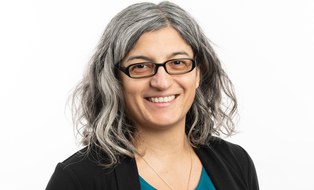 © Sven Ellger/TUD
© Sven Ellger/TUD
Advice on studying abroad
NameMs Federica Serra
Infocenter/ Study abroad; TUDworldwide: America
Send encrypted email via the SecureMail portal (for TUD external users only).
Visiting address:
Fritz Foerster Bau, Office 161 Mommsenstraße 6
01069 Dresden
Postal address:
TUD Dresden University of Technology International Office
01062 Dresden
Office hours:
- Tuesday:
- 09:30 - 11:30
- 12:30 - 14:30
- Thursday:
- 09:30 - 11:30
Please register at the SCS (FOE, floor 0).
Looking for first-hand information?
Would you like to know more about Vietnam? Ask our alumni ambassadors - TUD alumni who are active in many countries around the world and can give you information and advice for your stay abroad.
Getting in touch is very easy: On this interactive world map, markers indicate the cities where our alumni ambassadors live. There is a short profile with contact information for each ambassador.
Partner Countries Archive
Have you missed a partner country? No worries! Here you can read up on all articles.
|
Europe (Erasmus+) |
|
|
Africa |
|
|
America |
|
|
Asia |
|
|
Australia and Oceania |
|


